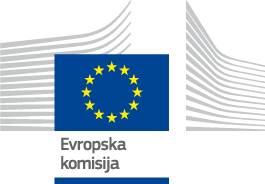

FLAG Factsheet
The Jūrkante FLAG is situated in the northern part of Latvia and stretches for about 61 km along the Gulf of Riga coast, from Skulte to Ainaži. The FLAG covers two towns (Ainaži, Salacgrīva) and two municipalities made up of six parishes (Ainaži, Salacgrīva, Liepupe, Pāle, Skulte and Viļķene).
The unemployment rate in the FLAG area is 3.6% (2014), which is well below the national average (10.8%) and continues to decline.
There are three small ports in the area, which have a strong tradition of fishing and fish processing. One large processing company operates in the area and provides 75 % of the sector’s employment.
The area is characterized by its rich biodiversity, with a significant number of protected areas such as the Stony Beach of Vidzeme, the meadows of Randa, the Salaca River Valley and the North Biosphere Reserve. These areas are renowned for their natural landscapes and scenery, like the Ainaži northern pier, the cliffs of Veczemes and the Salaca river.
The FLAG area is also well known for its cultural events, such as the Lamprey Festival, the Festival of “Herring Eaters” and the Sea Festival.
Challenges facing the area include population loss and a decline in the number of coastal fishermen. Currently there are only a few young fishermen involved in small scale fishing activities. Enterprise and business development in the area is also negatively affected by global competition, as well as the limited purchasing power of the local population. The Russian embargo on European fish products in 2014 has also had a significant impact on the local fisheries sector and continues to affect communities along the coast.
There are twenty protected areas including the North Vidzeme Biosphere Reserve, the Salaca River Valley, the meadows of Randa, the Stony Beach of Vidzeme and the Vitrupe River Valley.
The fisheries CLLD strategy focuses on strengthening competitiveness and boosting business development within the fisheries sector, as well as on promoting the use of local natural resources to create business opportunities, and preserving the fisheries cultural heritage.
More specifically, the FLAG strategy aims to:
National
EAFRD – €619 161 including national co-financing of 68%.
The FLAG organises calls for projects once a year.
The deadline for the first call for projects was the 18th of May 2016.
The FLAG is interested in exploring two cooperation ideas:
No budget has been defined for cooperation.
The FLAG area is the same as the LEADER area and is administered by the same entity. EMFF co-financing of projects is only possible in the parishes of Skulte, Liepupe, Tūja, Salacgrīva, Svētciems and Ainaži. The LAG-FLAG manages the implementation of a single local development strategy co-financed by the EMFF, the EAFRD and a national contribution, with separate action plans for each ESI Fund.
The board of the FLAG is also the board of the LAG. There are five representatives of the fisheries sector, which equates to 50 % of the private/NGO sector representation.
The FLAG board (decision-making body) consists of thirteen members, but all forty-five members of the FLAG are actively involved.
The board consists of three representatives of the public sector (municipalities) and ten representatives of the private/NGO sector. The private sector is represented by five fishermen and two farmers. There are three NGO representatives, including one youth representative and two representatives of women interests’ associations.